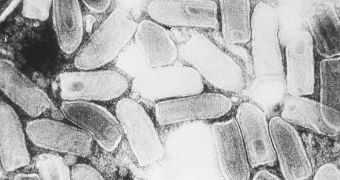The vesicular stomatitis virus (VSV) is one of the most interesting negative-strand RNA viruses out there today, for the simple reason that it can be used for a wide variety of purposes. For starters, it gives researchers more clues about the life cycle this class of microorganisms has. This is very important because these viruses include the ones causing influenza, measles and rabies. In addition, they can also be genetically altered in a way that enables them to act against cancer, as an agent that inhibits tumor growth. And, last but not least, they could possibly be used in a vaccine against the dreaded HIV virus.
VSV has proven to be extremely good at selecting cancer cells from healthy cells for termination, so hopes are high that the virus could actually be of some practical use. Now, after decades of trying to understand its internal structure, as well as other chemical and physical traits it possesses, researchers at the University of California in Los Angeles (UCLA) have finally managed to make a considerable progress. The teams, based at the NanoSystems Institute and the Department of Microbiology, Immunology and Molecular Genetics, exceed the technological hurdles that prevented past research efforts from succeeding.
By employing cryo-electron microscopy, and using image-processing methods in an integrated manner, the groups managed to produce a three-dimensional view of the trunk of VSV. As if the breakthrough was not enough in itself, the new data also allowed the researchers to piece together a full description of the microorganism, top to bottom. The architectural organization of its components was also determined. Details of the amazing, new work appear in the latest issue of the top journal Science.
“Structures of individual rhabdovirus proteins have been reported in Science and other high-profile journals, but until now, how they are organized into a bullet shape has remained unclear. The special shape of VSV – a bullet head with a short, helical trunk – has lent to its evasion from three-dimensional structural studies,” UCLA Professor of Microbiology, Immunology and Molecular Genetics Z. Hong Zhou says. He is also the author of the journal entry, and a member of the CNSI.
“Our structure provides some of the first clues for understanding VSV-derived vaccine pseudotypes and for optimizing therapeutic VSV variants. This work moves our understanding of the biology of this large and medically important class of viruses ahead in a dramatic way. The next stage of research for our team will be to reveal the details of molecular interactions at the atomic scale using advanced imaging instruments now available at CNSI,” Zhou concludes.

 14 DAY TRIAL //
14 DAY TRIAL //